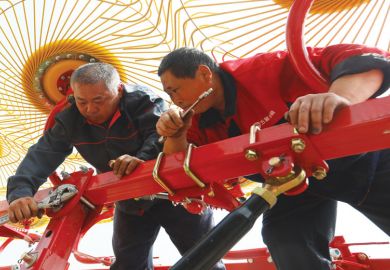Linguistic theory had a mathematical, computer-like flavour from at least the 1960s, long before most linguists had the chance to get their hands on computers. So when that opportunity arrived, it was natural that the subdiscipline of computational linguistics developed mainly as a field which pursued the agenda of theoretical linguistics using electronic technology in place of pencil and paper. Computational linguistics was largely concerned with implementing theories of speakers' competence. Machine translation was an exception; experiments in using computers to translate between human languages were as old as the computer itself, and were obviously oriented to practical goals. But machine-translation researchers were something of a race apart within the computational linguistics domain; most computational linguists were more interested in language as an aspect of cognitive psychology than in producing software systems that could do useful work.
Things changed as computers became more powerful during the 1980s and 1990s. That growth in power was needed, if computers were to process real-life language, because natural-language processing is one of the most memory-hungry academic applications of computing. Chemists deal with interactions among atoms of a hundred-odd elements. The linguist's atoms are words, and even a smallish English dictionary will list some 60,000 words, each of which has its distinctive behaviour. But the advances in hardware coincided with new political pressures on academics to find research avenues that would lead to new or improved products or services.
Nowadays it is generally agreed that one of the most urgent practical goals for the coming decades is to humanise the process of information exchange between men and machines, which must imply developing systems that enable computers to use human languages. In the 1990s, systems of this sort have been making the transition from research to industrial development.
The task of developing robust, practical software systems for processing natural language has come to be called "language engineering". The first issue of this journal, in March 1995, attributed the coinage to a European Commission document of 1991, and even now it seems to be used more frequently in Europe than in North America, but internationally "language engineering" has become probably the best-recognised term to cover activities such as natural-language interfaces to databases, machine translation, automated document retrieval, voice-driven typewriters, automatic report generation, and many others. Some of these applications involve spoken input or output; but "language engineering" refers particularly to work which focuses on issues other than the special problems of speech.
Established journals such as Computational Linguistics have broadened their purview to include the new, practical orientation. But by the 1990s the time was ripe for a new journal explicitly dedicated to it.
The journal has a European "centre of gravity". Two of the three editors are based in England, and Europe supplies a majority of the editorial board. In the late 20th century, Americans have become so dominant in the research world, and at the same time so insular, that this balance could seem risky; good American researchers might be unwilling to publish in a journal which they perceive as outside their own control. So far, this does not seem to be a problem. The journal is attracting a mixture of contributions from all parts of the world, including the US. The quality is uneven, which is inevitable in a new journal; but my impression is that at the worst I never find myself wondering (as I sometimes do when reading Computational Linguistics): "Why would someone want to pursue this particular investigation?" Four years after it began, many of us would miss Natural Language Engineering if it disappeared.
Geoffrey Sampson is reader in computer science and artificial intelligence, University of Sussex.
Natural Langauge Engineering
Editor - Roberto Garigliano
ISBN - ISSN 1351 3249
Publisher - Cambridge University Press
Price - £44.00 (indivs.) £92.00 (instits.)



